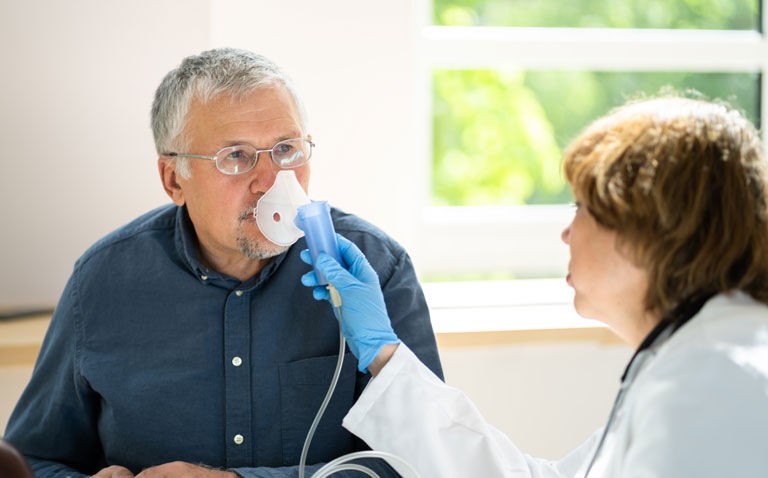Addition of the nebulised steroid budesonide to intravenous hydrocortisone in patients with acute asthma in the ED does not improve outcomes, according to a recent study
The nebulised steroid budesonide in addition to intravenous hydrocortisone hemisuccinate, is no better than saline at improving peak expiratory flow or other relevant outcomes in patients with acute asthma presenting at an emergency department, according to the findings of a randomised, controlled trial by Tunisian and Chinese researchers.
Although the use of either injectable or oral systemic corticosteroids (steroids) is recognised as an effective treatment for the resolution of acute asthma symptoms, an alternative is the use of an inhaled or nebulised steroid, especially when used in conjunction with either intravenous or oral steroids.
However, a 2012 Cochrane review concluded that while the early use of inhaled steroids reduces hospital admissions in patients with acute asthma who are not treated with oral or intravenous corticosteroids, there is insufficient evidence that such combinations led to clinically important changes in pulmonary function or clinical scores.
There is evidence that in combination with nebulised short-acting bronchodilators, addition of the nebulised steroid, budesonide resulted in clinical improvement in children with moderate-to-severe acute exacerbation of asthma.
For the present study, researchers undertook a randomised, placebo-controlled trial and for which the working hypothesis was that a nebulised steroid combined with a systemic steroid would be more effective at managing pulmonary symptoms than the systemic steroid alone.
They specifically examined high dose and repeated inhaled budesonide in combination with intravenous hydrocortisone hemisuccinate in the treatment of adult patients with acute asthma presenting at an emergency department (ED).
The research team recruited adult patients diagnosed with acute asthma and who had a peak expiratory flow (PEF) rate of less than 50% of the predicted value, which is indicative of severe narrowing of the large airways and hence a medical emergency.
Participants in the intervention arm received nebulised terbutaline 5mg in combination with ipratropium 0.5mg and 0.5mg budesonide followed by frequent use of budesonide and terbutaline after 20, 40, 60 and 120 minutes.
In the placebo arm, participants received the same treatment, although budesonide was replaced with saline. For all patients PEF, respiratory rate (RR) and heart rate were measured before and after the different periods of time. The primary outcome of interest was the improvement in PEF and reduction in hospital admission rate, whereas the secondary outcomes included RR and heart rate.
Nebulised steroid and asthma outcomes
A total of 54 participants were randomised to budesonide (23, mean age 38 years, 39% male) or saline.
The average PEF at 180 minutes was 308l/min and 321l/min in the budesonide and control group respectively, representing a 139% and 121% increase from baseline and this difference of 18% was non-significant (95% CI -62 to 98%).
In fact, there were no time-points when this difference was statistically significant. Furthermore, changes in RR, heart rate and all other secondary outcomes were also not significantly different between the two groups. Finally, hospitalisation rates were 40% for the nebulised steroid group and 38% for saline and, again, this difference was not significantly different (p = 0.88).
The authors concluded that addition of nebulised steroid to systemic steroids provided to additional benefit compared to systemic steroids alone in adult patients with acute asthma presenting to an ED.
Citation
Marghli S et al. Nebulized budesonide combined with systemic corticosteroid vs systemic corticosteroid alone in acute severe asthma managed in the emergency department: a randomized controlled trial BMC Emerg Med 2022










